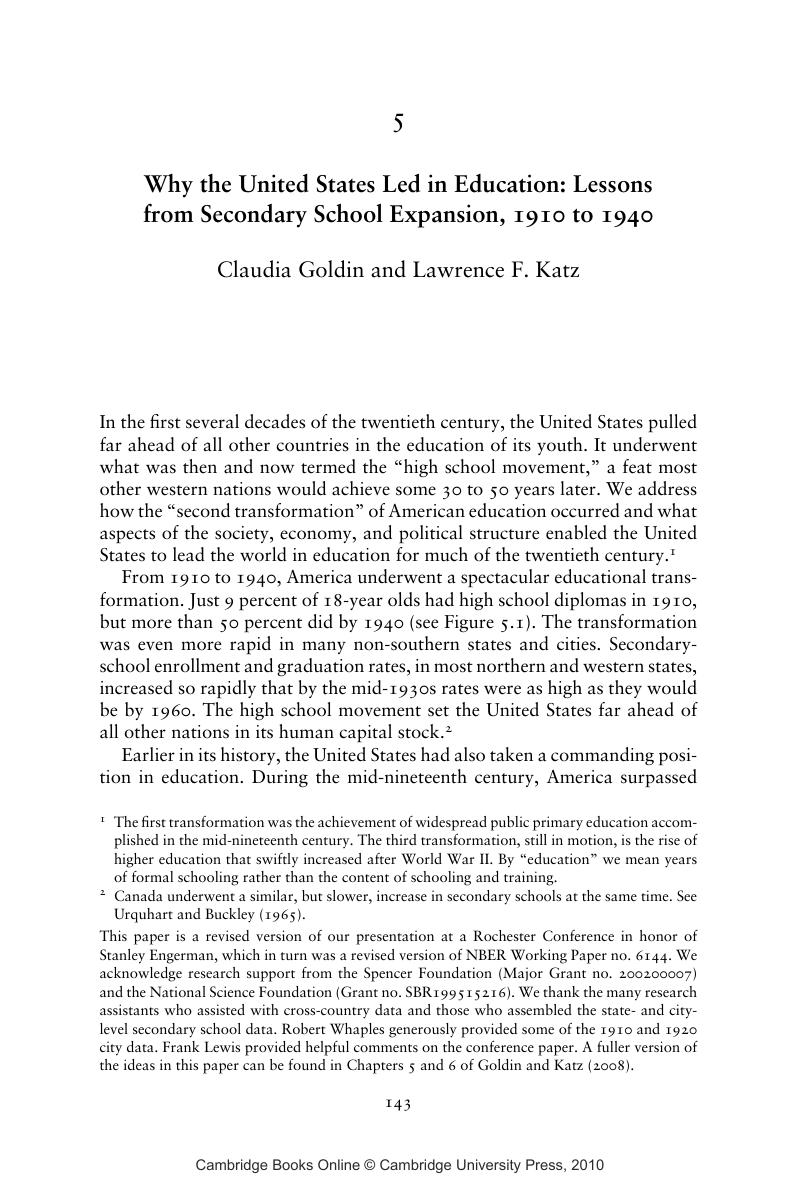Book contents
- Frontmatter
- Contents
- In Memoriam: Kenneth L. Sokoloff
- Contributors
- Introduction
- PART I HEALTH AND LIVING STANDARDS
- PART II INSTITUTIONS AND SCHOOLING
- 4 The Evolution of Schooling in the Americas, 1800–1925
- 5 Why the United States Led in Education: Lessons from Secondary School Expansion, 1910 to 1940
- 6 The Production of Engineers in New York Colleges and Universities, 1800–1950: Some New Data
- PART III HUMAN CAPITAL OUTLIERS
- PART IV CONSTRAINTS IN LABOR AND FINANCIAL MARKETS
- Index
- References
5 - Why the United States Led in Education: Lessons from Secondary School Expansion, 1910 to 1940
from PART II - INSTITUTIONS AND SCHOOLING
Published online by Cambridge University Press: 22 December 2009
- Frontmatter
- Contents
- In Memoriam: Kenneth L. Sokoloff
- Contributors
- Introduction
- PART I HEALTH AND LIVING STANDARDS
- PART II INSTITUTIONS AND SCHOOLING
- 4 The Evolution of Schooling in the Americas, 1800–1925
- 5 Why the United States Led in Education: Lessons from Secondary School Expansion, 1910 to 1940
- 6 The Production of Engineers in New York Colleges and Universities, 1800–1950: Some New Data
- PART III HUMAN CAPITAL OUTLIERS
- PART IV CONSTRAINTS IN LABOR AND FINANCIAL MARKETS
- Index
- References
Summary

- Type
- Chapter
- Information
- Human Capital and InstitutionsA Long-Run View, pp. 143 - 178Publisher: Cambridge University PressPrint publication year: 2009
References
- 6
- Cited by



